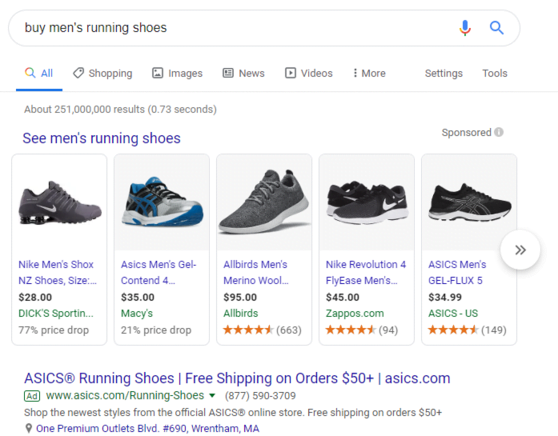
Welcome back to the online advertising news round-up! In this edition, we’ve got Google Ads retiring Enhanced CPC as a portfolio bid strategy, rolling out monthly campaign budgets to certain advertisers, upgrading the mobile app, and more.
Google Ads retires portfolio bid strategies
Responding to advertiser demands for simpler bidding, Google has announced the retirement of Enhanced CPC as a portfolio bid strategy. For those who may not know:
- A portfolio bid strategy enables you to optimize your bids across several campaigns.
- Enhanced CPC is a semi-automated, auction-time bid strategy that adjusts your manual CPC bids according to the likelihood of clicks leading to conversions. For example, say you’ve set a $2 bid on the keyword “men’s running shoes.” If a user who seems likely to convert triggers that keyword, Google will automatically increase your bid above $2 to give you a better chance of securing the conversion.
To be clear, I’m referring to the ASICS text ad. Shopping ads aren’t tied to keywords.
According to Google, few advertisers use Enhanced CPC as a portfolio bid strategy—so few, in fact, that it no longer makes sense to keep it as an option. Later this year, if you’re still using Enhanced CPC at the portfolio level, Google will automatically migrate the bid strategy to the individual campaign level.
Additionally, Google has announced the retirement of the target spend setting as an option for Maximize Clicks portfolios. In other words, if you’re using Maximize Clicks as a portfolio bid strategy, you’ll no longer have the option to set a single target spend level across the campaigns within that portfolio. Instead, you’ll have to set an average daily budget for each individual campaign. And speaking of campaign budgets…
Google Ads introduces monthly campaign budgets
A number of representatives on our in-house agency team have noticed a subtle but noteworthy change in the Google Ads interface: a choice between setting an average daily campaign budget or a monthly campaign budget. At the time of this writing, this choice has only rolled out to select Google Ads accounts.
In the past, you’ve only had the option to give Google Ads an average daily budget for your campaign—a figure you can calculate by dividing the amount of money you want to spend each month by 30.4 (the average number of days in a month). Although Google Ads would never go over that total monthly budget, it would occasionally go over your daily budget if a given day provided ample opportunities to drive conversions.
By giving account managers the option to choose between an average daily budget and a monthly budget, Google Ads is likely trying to erase the confusion that often arises when advertisers notice the fluctuations in their daily spend. As of now, there’s no indication that average daily budgets are going away.
Here are a couple reactions from around the PPC community:
Big improvements coming to Google My Business
Last week, Google announced an array of new features and tools to help local businesses improve and promote their Google My Business profiles. Let’s first take a look at the new profile features and then shift to the new promotion tools.
New profile features
One tenet of the new-and-improved Google My Business is the suite of features businesses can now add to their profiles to make them more on-brand:
- Company logo: As long as the information at the core of your listing—your address, hours of operation, etc.—is up-to-date, you can add a company logo to the upper-right corner of your profile.
- Cover photo: Add a banner-like photo to the top of your profile and give users a good first impression of your business.
- Photo carousel: Upload a series of photos that users can swipe through to get a better sense of what your business is all about. Soon, you’ll be able to add an explanatory caption to each photo.
Via Google.
New promotion tools
Beyond making your profile look better and more on-brand, you can now use several new promotion tools both to attract new customers and to retain current ones:
- Welcome offers: When a user opts to follow your business—which basically amounts to them getting updates in the “For You” section of Google Maps—you can thank them with a one-time welcome offer. For example, if you’re marketing an ice cream shop, you can reward new followers with a coupon for a free cone.
- Short name and custom URL: In order to make it easier for loyal users to quickly find your GMB profile, Google is allowing businesses to create short names—which users will soon be able to search in Maps—as well as custom URLs.
- “Local Favorite” designation: For each business category, Google will be rewarding the companies in the top 5%—the companies that consistently deliver stellar user experiences—by appending “Local Favorite” badges to their profiles. Google hasn’t specified which criteria they’ll use to make these distinctions.
Facebook to remove info sections from business pages
As pointed out by a number of Twitter users, including social media strategy consultant Matt Navarra, Facebook has warned business page managers that several information sections will be removed from their pages on August 1 of this year. Here’s the full list:
- Mission
- Company overview
- Biography
- Affiliation
- Personal interests
In lieu of an official announcement, Facebook said only this: “Consider adding [the information contained in these sections] to your Page description.”
Ostensibly, Facebook has decided to remove these information sections simply because they’re unnecessary. While your company’s mission and overview can fit neatly into your page’s description, things like your biography and personal interests should probably get the axe. After all, Facebook’s ability to connect users with appropriate business pages depends on the quality of their data. With superfluous information like biographies and personal interests clogging their algorithms, that ability may be hindered. In any case, make sure everything you need users to know about your business is included in your page description.
Shopping data now available in landing pages report
Good news for ecommerce advertisers who (wisely) strive to optimize their prospects’ post-click experiences: The landing pages report in Google Ads now includes data from Shopping campaigns. As of now, you can consult that report to see how well (or poorly) your website is converting clicks into purchases.
As you can see in the screenshot shown below, the report provides a number of useful metrics for each of your Shopping landing pages. For the purposes of conversion rate optimization, of course, the two of greatest concern are gross conversions and conversion rate.
Via Google.
Having centralized access to this performance data enables you to do a couple things. One: you can use it to prioritize optimizations. For example, if your average Shopping landing page converts visitors at a rate of 12%, but one page in particular is converting visitors at a rate of only 3%, it’s safe to assume that page should be your top priority. Two: you can use it to nip problems in the bud. If the conversion rate on your top Shopping landing page suddenly drops from 18% to 4%, that’s a pretty strong indicator that something has broken and requires your immediate attention.
Microsoft Advertising introduces parallel tracking
In a blog post published earlier this week, two program managers from Microsoft Advertising (formerly known as Bing Ads) made an announcement that could provide a huge boost to your conversion rate optimization efforts: Parallel tracking is now available as a beta.
For those who may not know, parallel tracking is an alternative to sequential tracking. When the latter option is enabled, a user who’s just clicked on your ad has to go through a series of redirects before arriving at the final URL (your landing page). On the other hand, when parallel tracking is enabled—as it has been for Google advertisers for a while now—a user who’s just clicked your ad is taken directly to the final URL while the click measurement process takes place in the background. Here’s a handy illustration of the difference between the two systems, courtesy of Microsoft:
Via Microsoft.
If you’re anything like me, your initial reaction to this news is probably something along these lines: That’s cool and all, but much time does parallel tracking really save? That’s completely fair; in the grand scheme of things, we’re talking about a second or two—if even that. But, as crazy as it sounds, saving your prospects that second or two could yield a substantial improvement in your paid search conversion rates. Even if enabling parallel tracking only recovers a single conversion each month, that’s still immensely valuable.
If you’d like to try parallel tracking before it’s broadly rolled out to everyone, reach out to your Microsoft Advertising representative.
New functionality added to Google Ads mobile app
As of last week, you can do a whole lot more with the Google Ads mobile app than ever before. To be more specific, you can now:
- Create and edit responsive search ads. In the past, the mobile app has only allowed you to pause or enable existing responsive search ads.
- Add, review, and edit negative keywords. In the past, this functionality has only been available to advertisers on desktop.
Via Google.
The importance of these updates to the mobile app is more about convenience than anything else. Unfortunately, there are times when you’re away from your computer and you need to make optimizations within your account. Evidently, advertisers have expressed to Google their frustrations about having restricted capabilities while stuck on a delayed train or waiting in a historically long Sweetgreen line. Hopefully more mobile app updates are on the way!


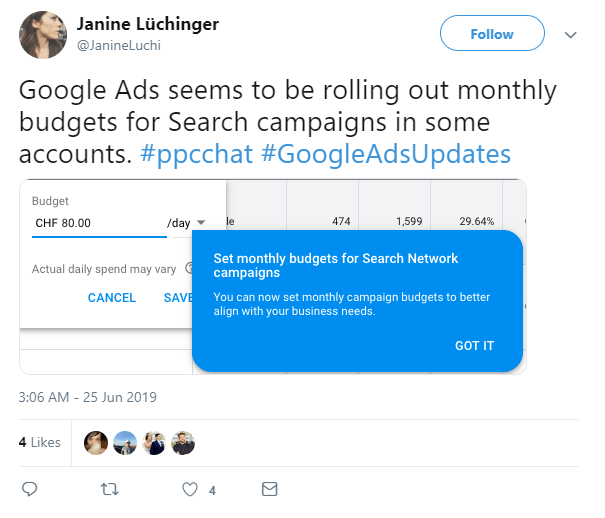
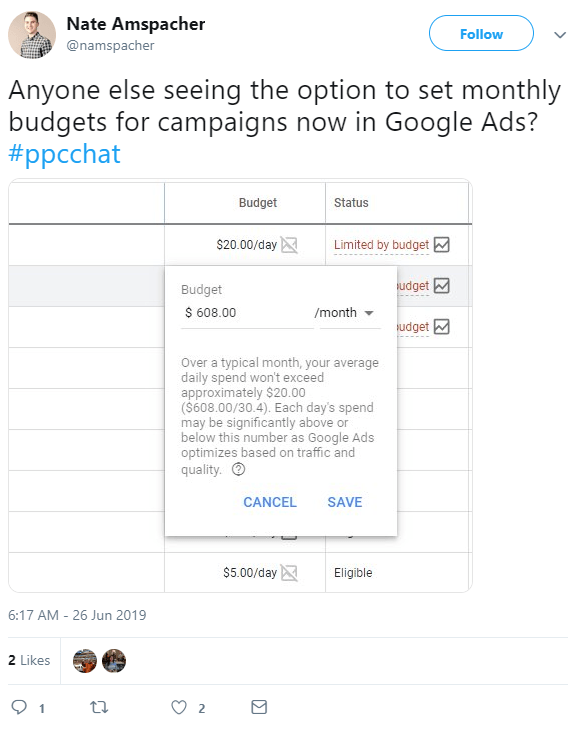
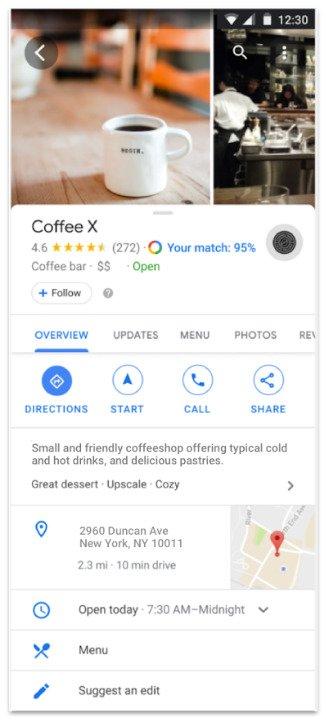
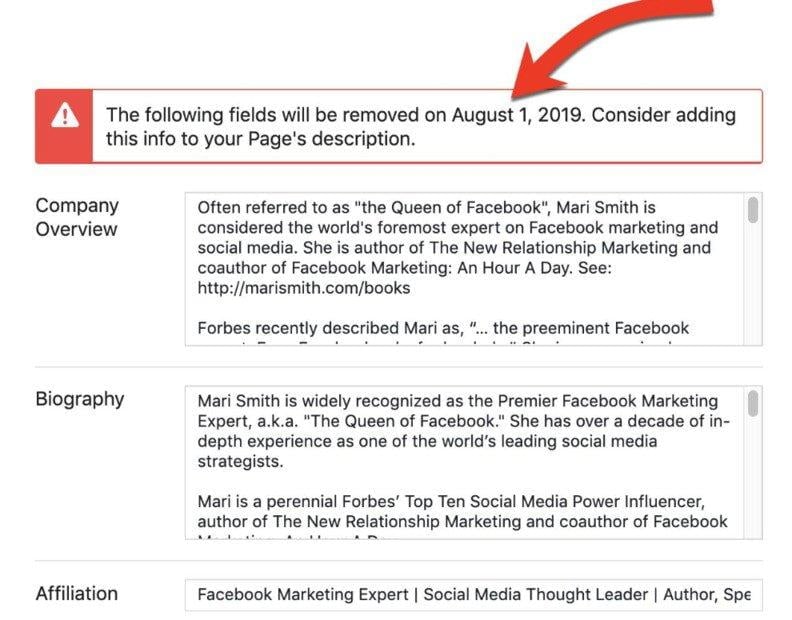

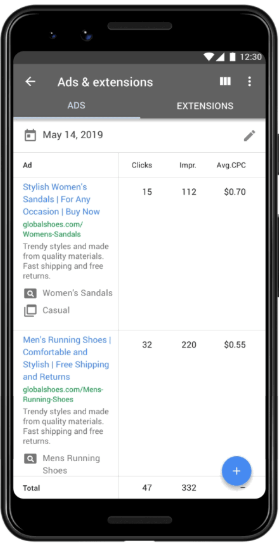

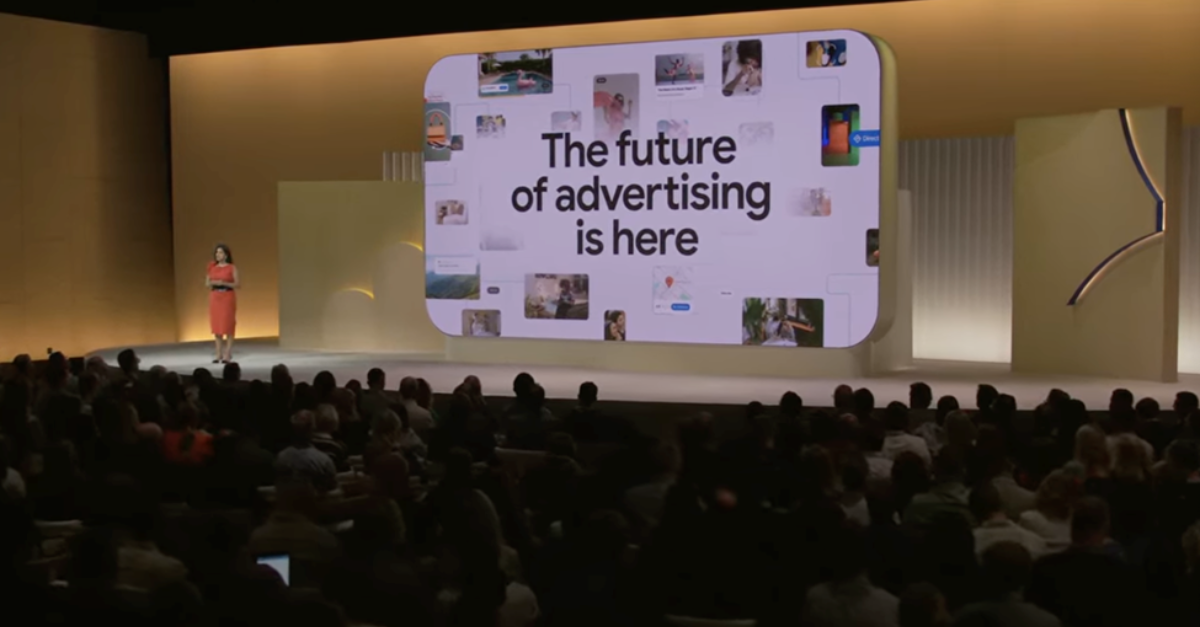
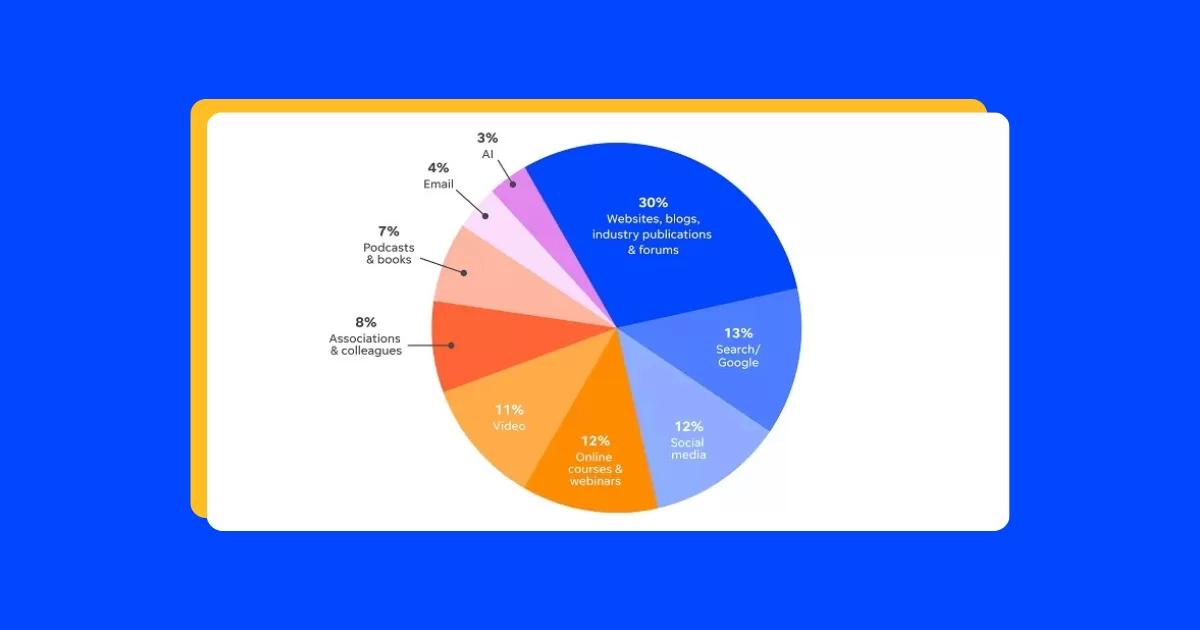
![Search Advertising Benchmarks for Your Industry [Report]](https://www.wordstream.com/wp-content/uploads/2024/04/RecRead-Guide-Google-Benchmarks.webp)


